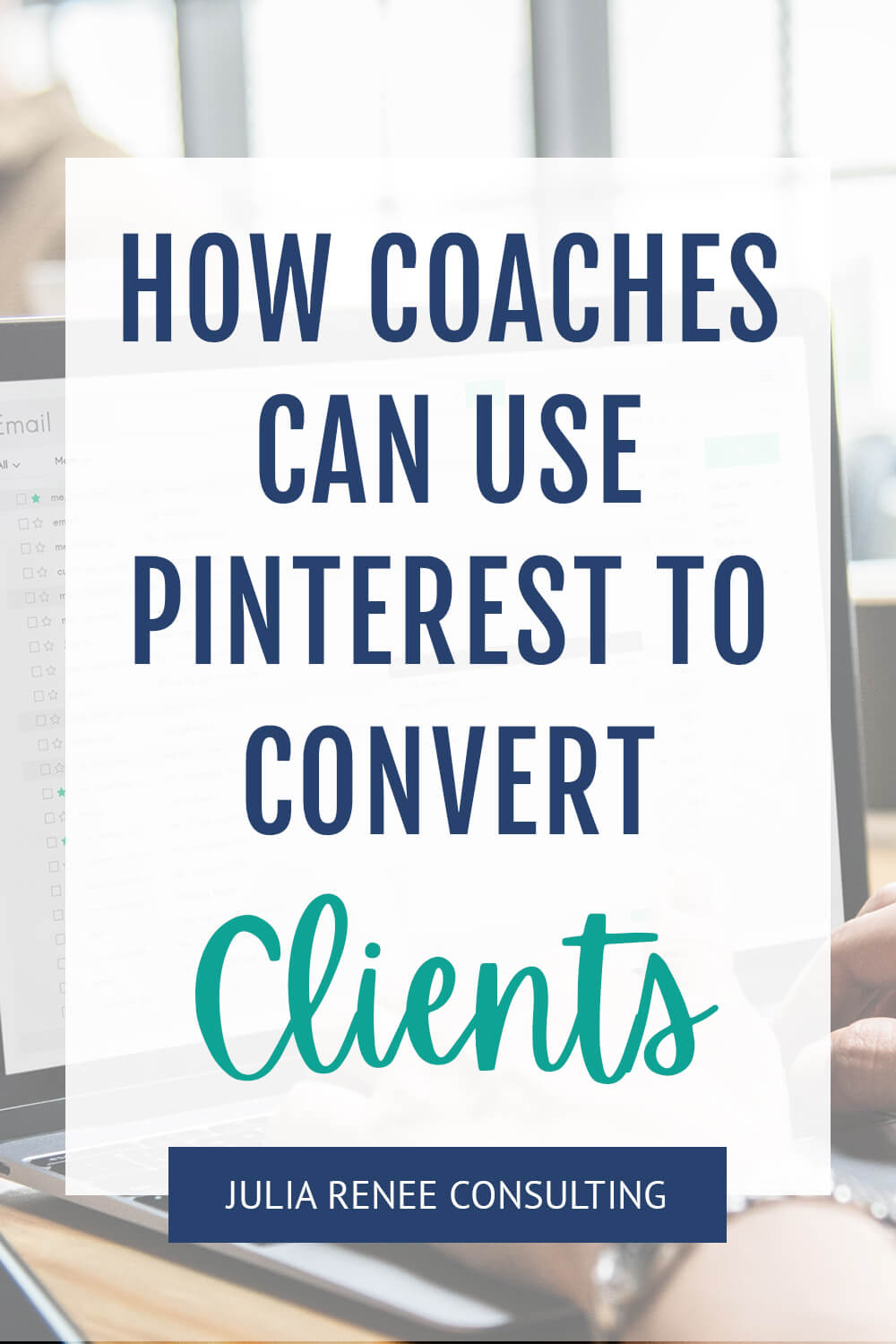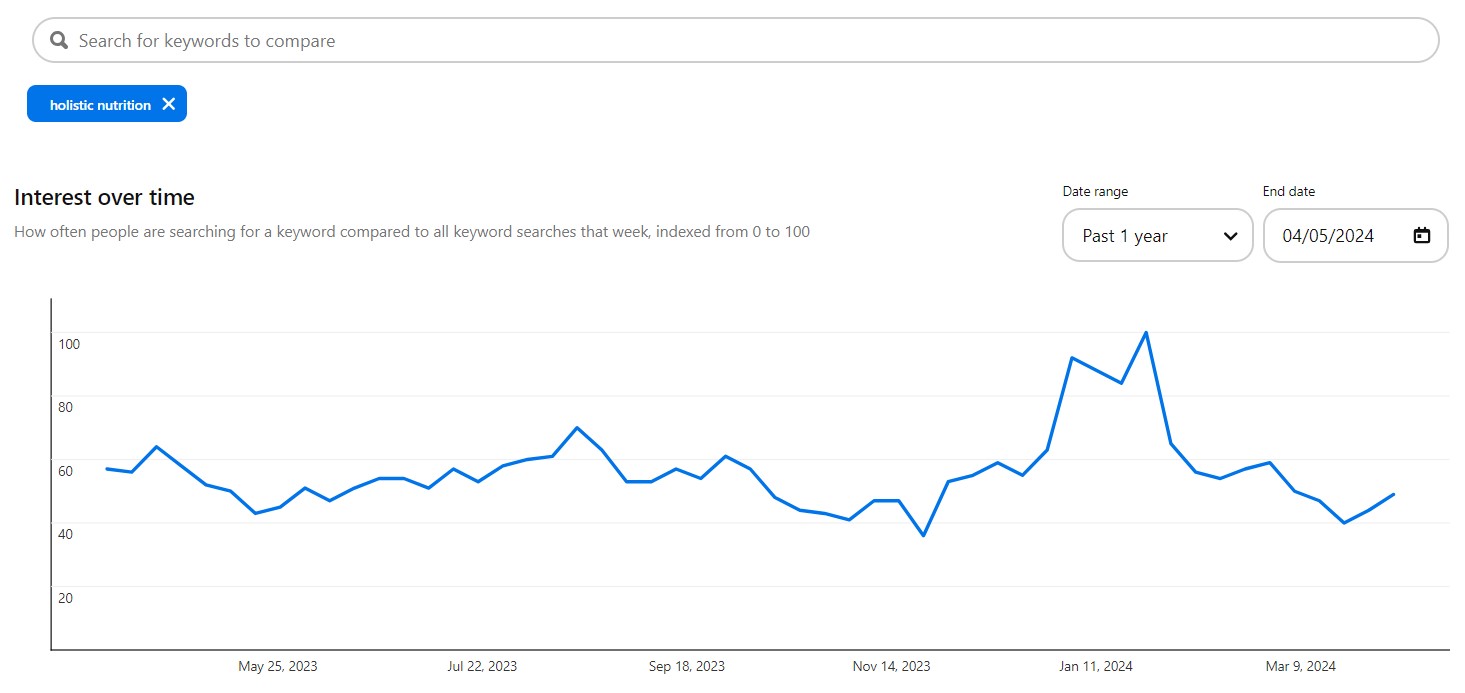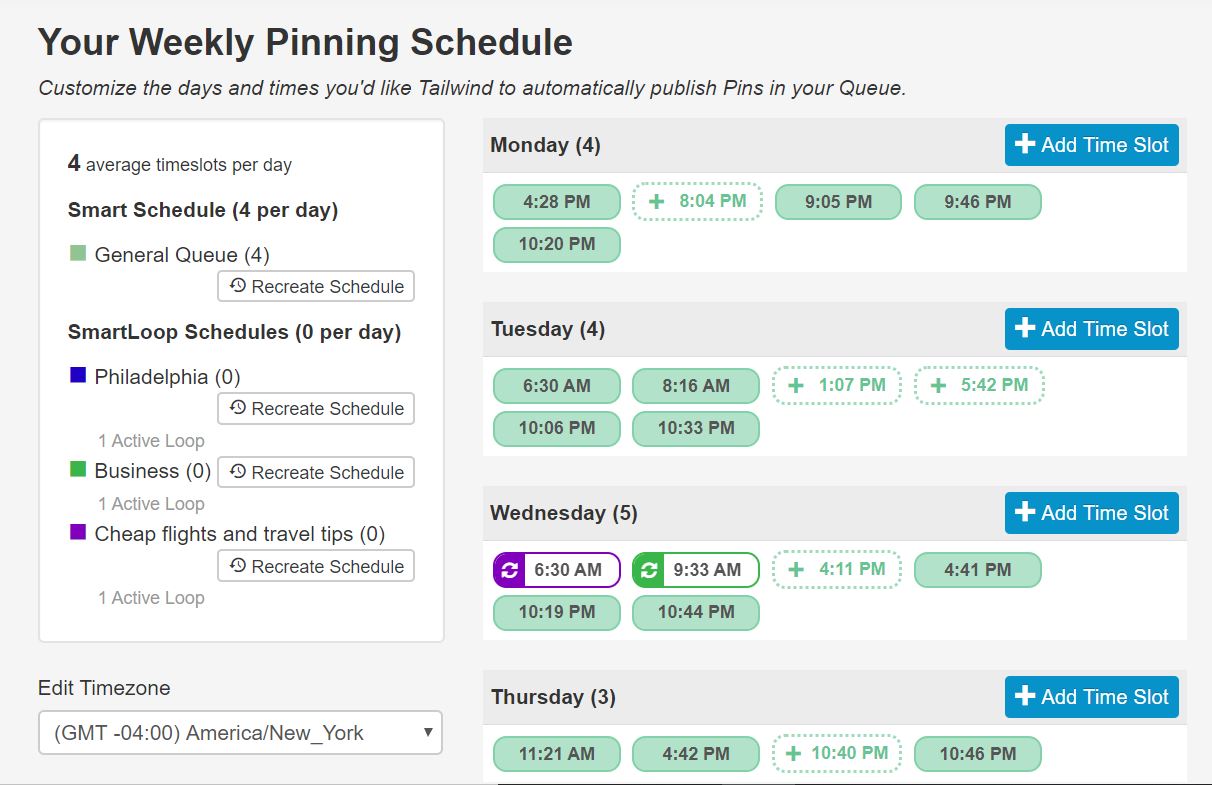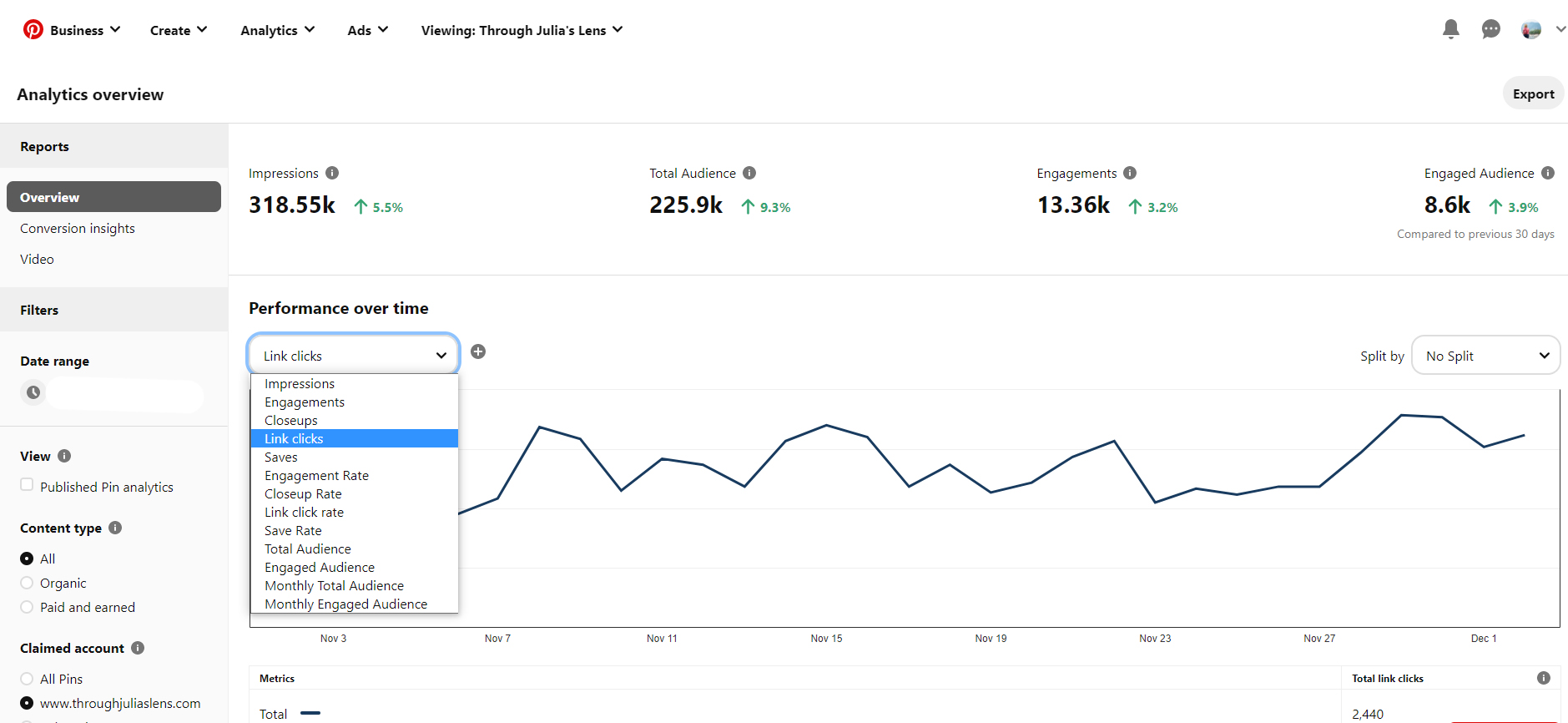If you’re a coach looking for new clients, Pinterest can be a great place for you to drive traffic and reach new audiences!
As much as I love Instagram for business (well, mostly), I’ve definitely seen how saturated it can be for coaches. If you’re tired of needing to show up every day on Instagram or even if you want to repurpose all the content you’re already creating for Instagram, Pinterest may be for you. So whether you’re a health coach or a finance coach, here are my top Pinterest tips for coaches to help you reach more clients!
Craft Strategic Content on Your Website
Before getting into the Pinterest tips for coaches, it’s essential to focus on creating content or products on your website that drives conversions. When you share insightful and educational content that resonates with your target audience, you position yourself as an authority in your coaching industry.
It’s important to create this content on your website for many reasons (especially for SEO reasons!), but it’s specifically important for Pinterest because you can claim your website on Pinterest and get data just for your site. You typically can’t claim third party sites like Instagram or YouTube anymore (and I really don’t recommend pinning to Instagram anyway), and you also want to make sure you’re leading your audience to your site anyway so they can get information about your services and offerings.
But if you’re already creating content on Instagram or YouTube or even a podcast, you can repurpose it into blog posts! AI tools make it super easy to combine Instagram captions or take YouTube or podcast transcripts and turn them into informational blog posts. And make sure all your content is relevant for the types of clients you want to work with (not just generic content that any coach could write), and include calls-to-action to lead people to sign up for your email list or check out your services and programs. You can even create landing pages on your site for your email list signups and pin directly to that!
Don’t Neglect Doing Keyword Research
Keyword research is the foundation of getting your content to rank on Pinterest (because it is a search engine), and to understand what terms and phrases your target audience is searching for on Pinterest (and on Google). And by strategically using these keywords in your pin graphics, pin titles and descriptions, and boards, you can optimize your content and reach a larger audience!
Keyword research might sound daunting, but all you need to start with is thinking about the specific terms and phrases that potential clients might use when searching for a coach in your industry on Pinterest. Broad keywords, like “health tips” or “business inspiration,” are a good place to get started, but long-tail keywords, like “how to scale a business” or “best foods for energy for moms,” are going to be easier to rank for and help you reach clients who are searching exactly for what you can help them with.
Use keyword research tools like Google Keyword Planner or Pinterest’s own keyword tool to discover popular keywords and assess their search volume. Look for keywords that are highly relevant to your niche and have a significant search volume to ensure that your content reaches the right audience.
Once you have identified your target keywords, strategically integrate them into your pins, pin descriptions, and board descriptions. Use them naturally so the keywords flow seamlessly within your content. Avoid keyword stuffing, as it can negatively impact your credibility and readability and just look spammy.
If you need more detailed help with keyword research, check out my posts on Pinterest keyword research and SEO keyword research.
Optimize Your Pinterest Profile
Just as you strategically integrate keywords into your pin graphics, pin descriptions, and board descriptions, optimizing your Pinterest profile is another essential step in getting your pins to rank well.
Start by selecting a visually appealing profile picture that represents your brand accurately (people like to see the face behind the business!). Next, write an attention-grabbing bio that describes who you are and what you offer as a coach, and make sure you incorporate your researched keywords. Make sure you claim your website on Pinterest so you can include the link to your website in your Pinterest profile.
The more specific information you can give Pinterest (and potential clients), the more it will help your profile rank well!
Create Engaging Boards
Creating boards your ideal clients are interested in is important for reaching them! Plus, this allows you to show off your expertise in different topics. Your boards are where you can exhibit your best coaching insights and offer visitors a glimpse into your coaching style and personality. And the board titles and descriptions help give Pinterest more context about your pin topics.
Start by brainstorming the various aspects of business coaching you specialize in and ensure your boards are optimized accordingly. Instead of generic board names like “Business Tips,” opt for descriptive titles rich in keywords, such as “Strategic Leadership Insights” or “Facebook Marketing Strategies for Entrepreneurs.” Or instead of “Mindset,” write something like “Mindset Tips for New Moms.” And don’t forget to add informative descriptions for each board to help them rank (both on Google and Pinterest).
Design Compelling Pins
When it comes to attracting attention on Pinterest, a visually appealing pin is worth a thousand words. Your pins need to be visually captivating and inspire users to click through to your website or portfolio. I have an entire guide on creating eye-catching pins, but here are a few tips to get you started:
HIGH-QUALITY PHOTOS
Use high-resolution images because crisp, clear, and professional-looking visuals are more likely to capture attention in the cluttered world of Pinterest (and stock photos that aren’t too generic or cheesy are totally fine to use!).
BRAND COLORS AND FONTS
Use your brand colors and fonts to make your pins visually appealing and cohesive. This helps your profile look professional when your audience sees all of your pins together, and it helps make your brand be more memorable.
CLEAR AND COMPELLING TITLES
Your pin’s title should be clear, concise, and enticing. Use attention-grabbing language and keywords that resonate with your target audience, and make sure everything is easy to read on desktop and mobile! Plus, Pinterest is getting better at reading the text on pins, so incorporating your keywords on the pin itself can help its rankings.
THOUGHTFUL COMPOSITION
Pay attention to the arrangement and layout of your pins. Experiment with different compositions, such as collages or close-ups. Think about how your pins will stand out in users’ feeds and catch their attention.
BRANDING ELEMENTS
Incorporate your branding elements, such as your logo or watermark, into your pins to establish a consistent visual identity. This not only helps with brand recognition but also adds a professional touch to your pins.
If this seems a little overwhelming, the main thing is to make sure your pins are clear and easy to read! So just focus on that before playing around with different designs.
Test Out Different Types of Pins
Testing out different pins might be my biggest Pinterest tip for coaches. Different types of pins can resonate with different audiences, so just because one type of pin works for a life coach you follow doesn’t mean it’s going to work as well for you.
Start by experimenting with standard pins, which are the most common type on Pinterest. These pins stand out with their vertical format and eye-catching graphics.
Video pins and Idea Pins offer a more immersive and interactive experience for users. You can use a mix of images, videos, and text to create compelling narratives that resonate with your audience. Even with video/Idea Pins, there are different things you can experiment with! You can do videos with quick tips or insights or longer talking head videos to connect with potential clients so they can get to know you more.
By testing out different types of pins, you will gain valuable insights into what resonates with your audience. Pay attention to the engagement metrics such as saves and clicks to your website to understand which pins are performing the best.
Create a Consistent Pinning Schedule
Consistency is a key Pinterest strategy for coaches when it comes to building your brand and engaging with potential clients on this visual platform. By consistently pinning high-quality and relevant content, you increase your chances of reaching more people and attracting their attention.
I recommend pinning every day, and the number of pins you post is entirely up to you. If you have tons and tons of content, you could pin 15 pins a day, but if you’re just getting started with your content, you can start with just pinning once or twice a day. As long as you’re pinning every day, the number of pins doesn’t matter too much!
Pinning consistently shows Pinterest that you’re an active user, and it allows you to showcase your expertise and the depth of your work. Just pinning the same blog post over and over again isn’t going to help your potential clients understand what you can do (and it won’t help you target a variety of keywords to help increase your traffic), so make sure you’re creating a lot of content to be able to pin consistently. If you want a pin scheduler so you don’t have to manually pin every day, Tailwind is a great tool, and my affiliate link will also get you a discount.
Keep Track of Your Results
These Pinterest tips for coaches aren’t going to be helpful unless you know how your account is performing! Pinterest has its own analytics you can use (and yes, I have a whole guide on Pinterest Analytics!), and I also recommend tracking in Google Analytics to see what your Pinterest audience is doing once they land on your site.
Tracking and analyzing your results is crucial for any marketing effort, and Pinterest is no exception. By understanding what works and what doesn’t, you can refine your approach and ensure that you are effectively reaching your target audience.
In Pinterest Analytics, I recommend checking your overall impressions, saves, and outbound clicks to your website. You can also see which pins are getting the most impressions, saves, and clicks to see how the different types of pins and designs are performing. By regularly reviewing these metrics, you can identify trends, understand which pins are resonating with your audience, and adjust your strategy accordingly.
By using these Pinterest tips for coaches, you can enhance your online visibility, establish your authority in your industry, and reach potential clients who are specifically searching for your expertise! It does take time to build traffic on Pinterest, so make sure you give it time and keep testing different content and pins to see what resonates with your audience. And if you don’t have time to dedicate to your account, check out my Pinterest management services and see how I can your coaching business!






